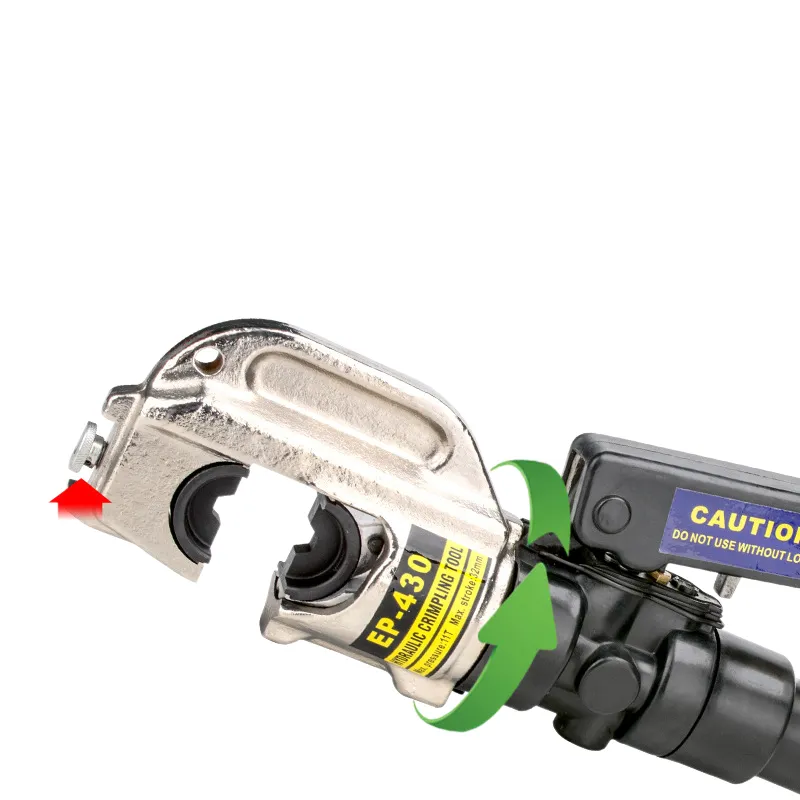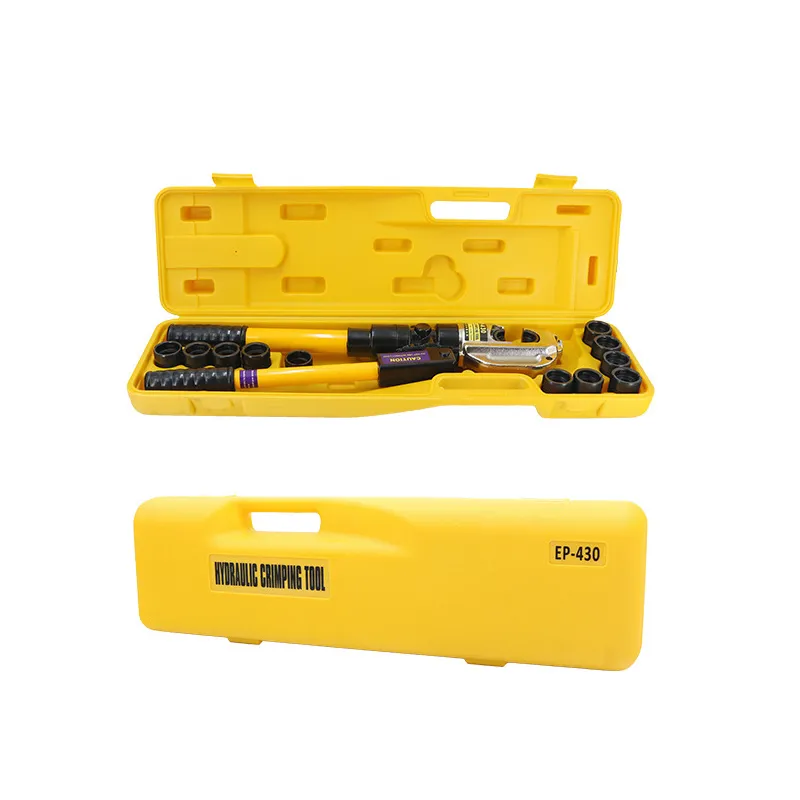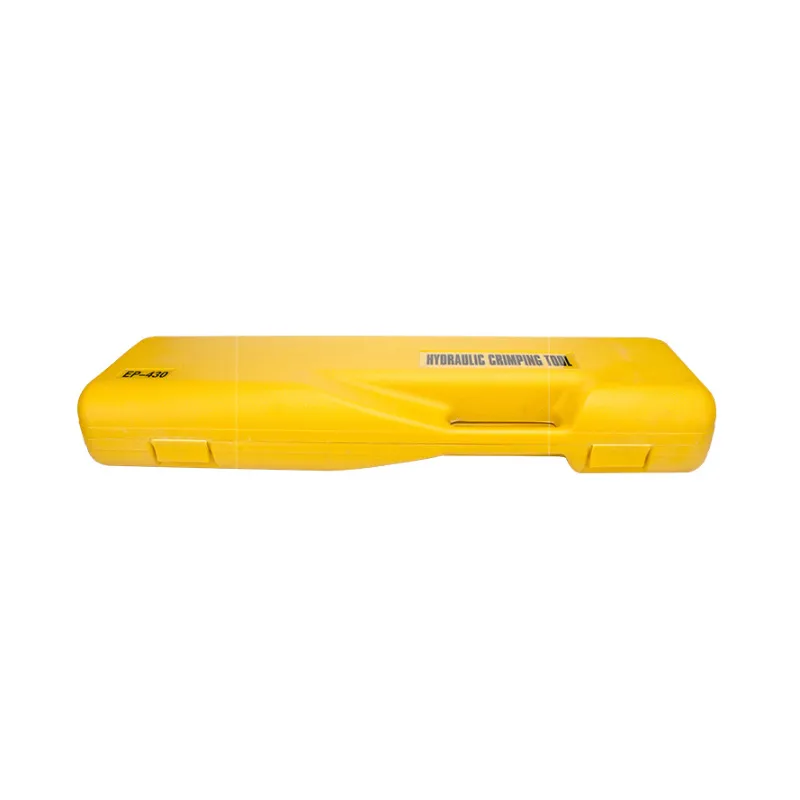


Oct . 22, 2025 15:45 Back to list
Hydraulic Hose Crimping Tool - Precise, Durable, Portable
Field Notes on a Hydraulic Hose Crimping Tool (and why electricians keep borrowing it)
I’ve spent enough time in substations and wind farms to know this: the right crimper turns a messy day into a short one. The EP410/430/510 from China’s BiloPowtel is pitched as a hydraulic crimping pliers set for cable lugs and wire terminals, but—speaking plainly—people search for it as a Hydraulic Hose Crimping Tool. That’s the internet for you. In practice, this series is optimized for electrical conductors, though the hydraulic architecture feels familiar to hose techs too.

What’s trending on job sites
Three currents are shaping the buying list: compact heads for tight panels, faster cycles (battery or quick-return hydraulics), and traceable crimps that pass IEC tests without drama. Many customers say they want fewer die changes, predictable compression, and comfortable grips—for a 100-lug day, ergonomics isn’t a luxury, it’s survival.

EP410/430/510 quick specs (real-world use may vary)
| Model | Crimp range (Cu/Al) | Output force | Head | Cycle time | Weight | Certs |
|---|---|---|---|---|---|---|
| EP410 | ≈10–240 mm² | ≈60–80 kN | Flip-open, die-based | ≈6–10 s | ≈3.5–4.5 kg | CE, RoHS |
| EP430 | ≈16–300 mm² | ≈90–100 kN | Rotatable 180° | ≈5–9 s | ≈4.8–5.6 kg | CE, ISO 9001 |
| EP510 | ≈50–400 mm² | ≈120–130 kN | Integral C-head | ≈5–8 s | ≈6.0–6.8 kg | CE, RoHS |
Materials: forged alloy steel head, induction-hardened dies, NBR/HNBR seals, high-cleanliness hydraulic oil. Testing: proof-pressure 1.5× rated; leakage ≤1 ml/10,000 cycles; crimp pull-out to IEC/UL lug ratings.

Process flow and quality gates
From billet to toolbox: CNC machining → heat treatment → surface finishing → assembly (pumps, seals, gauge) → pressure test → sample crimp verification to IEC 61238-1 → packaging. Service life is typically 5–7 years with seal refresh around 30k–50k cycles; to be honest, it depends on grit and maintenance. We’ve seen crews push well past that with regular oil checks.
Where it earns its keep
- Utility and switchgear: Cu/Al lugs, splices, and repair sleeves.
- Renewables: PV combiner boxes, battery racks, inverters.
- Rail, marine, mining: heavy lugs in cramped spaces.
- OEM/MRO: panel shops, cable harnesses, backup generators.
Feedback? Installers like the fast return and repeatable die profiles; one foreman told me the head clearance “saved us an hour a day inside MCCs.”

Vendor snapshot (indicative, around values)
| Vendor/Model | Force | Head | Weight | Warranty | Notes |
|---|---|---|---|---|---|
| BiloPowtel EP410/430/510 | ≈60–130 kN | Flip/C-head, rotatable | ≈3.5–6.8 kg | 12–24 months | Strong value; broad die set |
| Enerpac H-series (comparable) | ≈100–130 kN | C-head | ≈6–8 kg | 12 months | Industrial-grade, premium price |
| Greenlee EK-series | ≈60–120 kN | Dieless/die options | ≈3–7 kg | 12 months | Excellent ergonomics |
Compliance, testing, and data that matters
Compression joints were validated against IEC 61238-1 Type A protocols (conductor resistance, current-cycling, short-circuit endurance). In a recent batch audit, pull-out strengths met or exceeded catalog lug ratings; leakage stayed below lab thresholds across 10k pressure cycles. For safety, insulated handles align with ASTM F1505 guidance, while CE marking is under the Machinery Directive. If you’re crimping aluminum in coastal sites, I’d specify antioxidant grease and re-check torque after 24 hours—small habit, big payoff.

Customization and options
- Dies: hex, indent, U-shape; custom sizes for OEM lugs.
- Power: manual hydraulic, or electric pump kits for bench use.
- Traceability: laser-marked dies, serial logs for QA.
- Kits: case, spare seals, quick-couplers, and calibration report.
Mini case: a shipyard in Qingdao standardized on EP510 with hex dies for 240–400 mm² leads. After training and a die map taped inside each case, rework rates dropped by ~32% over two months. Not glamorous, but very real.
Final thought
Call it a Hydraulic Hose Crimping Tool if you like; what counts is consistent compression to standard. The EP410/430/510 delivers that, without making your wrist hate you by Friday.
- IEC 61238-1-1: Compression and mechanical connectors for power cables and conductors, Type tests. International Electrotechnical Commission.
- ISO 9001:2015 Quality management systems — Requirements. International Organization for Standardization.
- Directive 2006/42/EC (Machinery Directive) and 2011/65/EU (RoHS). Official Journal of the European Union.
- ASTM F1505: Insulated and insulating hand tools. ASTM International.
- IEC 60352 series: Solderless connections — General requirements. International Electrotechnical Commission.
Latest news
Hydraulic Crimping Tool – Precision & Heavy-Duty Speed
NewsNov.05,2025
Cable Pulling Swivel | High-Strength, Anti-Twist, Stainless
NewsNov.04,2025
Cable Pulling Tools – Pro-Grade, Safe, Fast Install
NewsNov.03,2025
Hydraulic Crimping Tool – Fast, Precise, Quick-Change Dies
NewsNov.02,2025
Hydraulic Crimping Tool for Sale | Fast, Precise, Heavy-Duty
NewsNov.01,2025
Duct Rodder for Sale – Non-Conductive, Durable Fiberglass
NewsOct.31,2025









